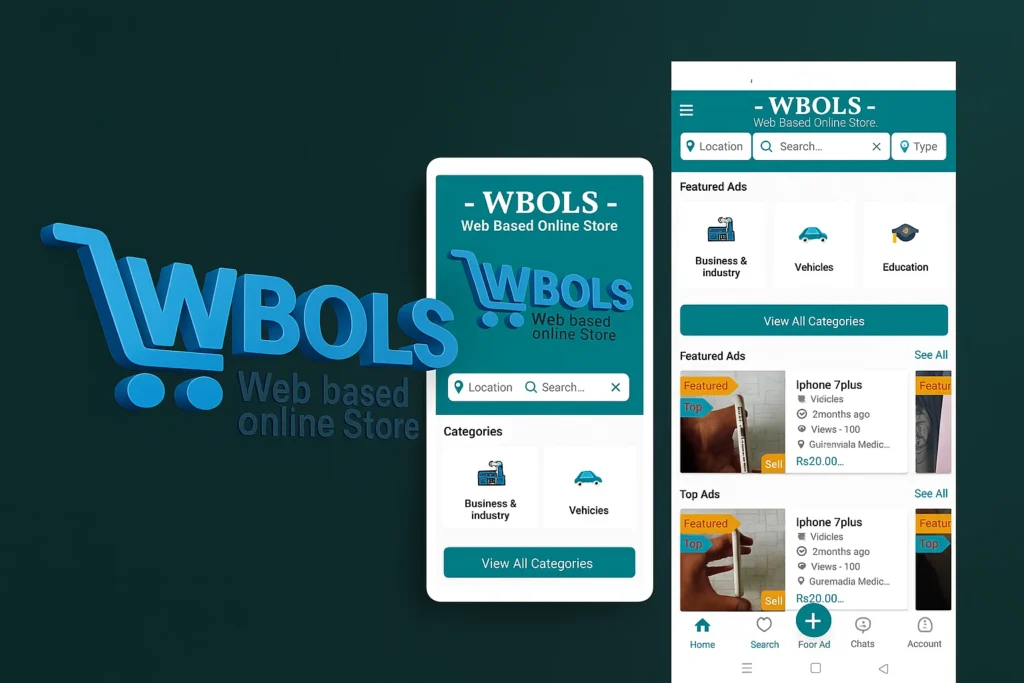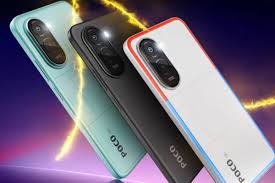If you want online advertising tricks that actually move the needle in 2025, start with three proven strategies: razor-sharp audience micro-segmentation (audience retargeting techniques), dynamic creative optimization to show the right creative to the right person, and advanced funnel design for progressive digital ad strategies 2025 that measurably improve ad ROAS. Below I’ll walk you through each trick in detail, give real-world examples, measurement checklists, sample ad copy, and a deployment roadmap so you can launch, test, and scale quickly.
Download our mobile Application
Trick 1 — Micro-segmentation & audience orchestration
H2: Why segmentation beats blasting
Mass targeting wastes budget. When you show the same creative and offer to everyone, your overall click-through and conversion rates sink because relevance drops. The first of the three powerful online advertising tricks is micro-segmentation — breaking your audience into small, behaviorally and contextually meaningful groups, and orchestrating different messages to each.
Segmentation increases relevance, which raises CTR and conversion rate (CVR), and lowers cost per acquisition (CPA). Small changes in relevance compound: +10% CTR +10% CVR typically reduces CPA meaningfully and increases Return on Ad Spend (ROAS).
Core segmentation dimensions (practical)
Use these primary dimensions to create segments:
- Acquisition source & campaign — users from organic search vs paid social vs search ads respond differently.
- On-site behavior — product page viewers, cart abandoners, page viewers > X seconds, video viewers ≥ 50%.
- Purchase intent signals — added to cart, coupon used, price-sensitive (visited pricing & shipping), high intent (repeat visits).
- Product affinity — category A vs category B shoppers, size/color preferences, device (mobile vs desktop).
- LTV cohort — new users vs frequent buyers vs VIPs.
- Recency & frequency — last active 0–7 days, 8–30 days, 31–90 days.
- Engagement channel — email clickers, push notification openers, SMS responders.
Practical segment templates (copy/paste)
- Segment A — Hot Cart Abandoners (0–48h)
- Inclusion: Added cart but did not purchase within 48 hours.
- Exclusion: Purchased in last 7 days.
- Ad angle: “X is reserving your cart — claim 10% off before it’s gone.”
- Landing: Pre-filled cart URL + single-click checkout.
- Segment B — Product Viewers (7–30 days)
- Inclusion: Viewed product page ≥2 times.
- Ad angle: “Customers viewed this — see top 3 reasons to choose it” (social proof + feature list).
- Landing: Product page with a quick testimonial section.
- Segment C — New Visitors from Search (0–7 days)
- Inclusion: First visit via organic search.
- Ad angle: “Welcome — get free shipping on your first order.”
- Landing: Category landing with educational content.
- Segment D — Lapsed Customers (90–365 days)
- Inclusion: Last purchase 90–365 days.
- Ad angle: Loyalty offer + complementary product recommendations.
- Landing: Personalized recommendation page.
Lookalike & seed strategies
Create high-quality seed audiences (top 1–5% by LTV or best customers) to feed lookalike models on platforms (Meta, Google, TikTok). Best practice: refresh seeds monthly, combine behavior + LTV signals, exclude recent converters to focus acquisition.
- Seed example: Top 2% of customers by purchase value & frequency; created as a hashed customer list or CRM audience.
- Lookalike settings: Start with 1% in target geography, run for test period (2–4 weeks), then expand to 3% if stable.
Cross-channel orchestration
Orchestrate segments across channels:
- Use search for intent capture,
- Social for awareness & mid-funnel storytelling,
- Programmatic for contextual reach,
- Email & push for owned-channel retargeting.
Maintain a single audience repository (CDP/CRM or Google/Meta custom audience lists) to avoid duplication and overexposure.
Trick 2 — Dynamic Creative Optimization (DCO)
Why DCO is the second powerful trick
Once you have high-quality segments, you need creatives that adapt to the segment. DCO uses modular creative templates where headlines, images, CTAs, and offers are swapped dynamically to match the audience segment and contextual signal (time of day, weather, device). That personalization at scale dramatically increases relevance.
Components of a high-performing DCO system
- Creative library (assets): multiple headlines, value props, hero images, badges (free shipping, fast delivery), CTAs.
- Template engine: combines assets into ad variations (HTML5 templates for programmatic, feed templates for Meta/Google).
- Decisioning layer: rules or ML-based scoring that selects which creative variant to serve for a segment/context.
- Measurement & attribution: track which creative elements drive lift (creative-level performance).
- Automation & rotation cadence: rules for pausing underperforming combinations and boosting winners.
DCO creative testing matrix (practical)
Build a matrix with variables:
- Headline (3 options)
- Image (4 options)
- Offer (discount, bundle, free shipping) (3 options)
- CTA (Shop Now / Learn More / Get Offer) (3 options)
- Social proof badge (star rating, “best seller”) (2 options)
Total combinations: 3×4×3×3×2 = 216. Use DCO to test and prune. Start with rules (show A to segment 1) and gradually enable ML optimization once you have conversion data (≥500 conversions).
Sample DCO setup (platform specifics)
- Meta (Facebook/Instagram): Use Dynamic Ads with Catalog & Creative Hub templates. Feed product attributes → image variants → headline rotation.
- Google Display & DV360: Use HTML5 creative templates and feed-based remarketing; apply contextual signals.
- Programmatic DSPs: Use DCO modules within DSP (Flashtalking, Adform) for creative decisioning.
- In-app & OTT: Use server-side creative assembly for size adaptation and personalization.
Example creative snippets
- Headline A: “Save 20% — Limited Time”
- Headline B: “Why X Customers Love [Product]”
- Image A: Product on white background (focus on color)
- Image B: Lifestyle shot (usage scenario)
- CTA A: “Buy Now — Fast Shipping”
- CTA B: “See Why It Works”
Rotate hero images based on device: lifestyle for mobile, product lifestyle plus copy for desktop.
Trick 3 — Funnel orchestration & value-based retargeting
The funnel is your conversion machine
Many advertisers focus on top-of-funnel reach. The third trick is to orchestrate sequential journeys with progressive offers and content—moving users from awareness → consideration → conversion → retention—using tailored creatives and offers at each stage. Combine this with value-based retargeting (bid on predicted LTV) instead of simply retargeting by last action.
Funnel stages & ad tactics
- Awareness (TOF): Broad targeting, engaging video, brand/value props, watch time optimization.
- Interest (MOF): Collection of email, lead gen forms, product education, comparison content.
- Consideration (MOF/BOF): Product demos, webinars, case studies, short testimonials.
- Decision (BOF): Strong offer, social proof, urgency, pre-filled checkout links.
- Retention & Upsell: Post-purchase cross-sells, loyalty offers, VIP exclusives.
Value-based retargeting explained
Instead of retargeting everyone who viewed a page, assign an LTV or propensity score (from your CRM/CDP). Use these scores to:
- Bid higher for prospects with a high predicted LTV.
- Give premium creative to high-propensity users (e.g., bundle or warranty).
- Offer lower friction purchases (one-click checkout) to hot prospects.
Retargeting sequences (example)
Sequence A – Cart Abandoner (0–48h)
- Ad 1 (0–6h): Reminder: “Items waiting — free shipping if you buy in 6 hours.”
- Ad 2 (6–24h): Social proof: “X people bought this today — 4.8★.”
- Ad 3 (24–48h): Stronger incentive or small discount with countdown.
Sequence B – Viewed Multiple Products (7–30 days)
- Ad 1: Educational comparison piece (video).
- Ad 2: Offer to join webinar or chatbot for questions.
- Ad 3: Limited time bundle or A/B tested discount.
Progressive offers vs one-time discounts
Use a progressive offer ladder: start with free shipping or bonus content, then escalate to small discounts, then bundle. This preserves margin and reduces discount dependency.
Cross-cutting items: privacy, tracking & cost control
Privacy-first measurement & server-side tagging
2025 advertising must be privacy-conscious. Use:
- Server-side tagging (GTMS/Server container) to reduce pixel loss and improve match rates.
- First-party data strategies: CDP/CRM ingestion, hashed emails, login flows.
- Consent management: Respect CMP and privacy laws (GDPR/CCPA style frameworks for international reach).
Server-side tagging often improves attribution rates by 10–30% vs browser pixels in cookieless contexts.
Cost control — automated rules & bid caps
- Use budget pacing rules to avoid overspend.
- Implement bid caps and target CPA with safety margins.
- Use frequency caps to avoid ad fatigue and CPM waste.
- Reserve test budget (10–15%) for exploration and creative play.
Attribution & incrementality
- Default last-click overstates last touch. Run holdout tests (10% control vs 90% exposed) to measure true incremental lift.
- Use geo experiments and ghost ads to understand cross-channel effects.
- Calculate incremental ROAS not only direct attributed conversions.
30-day launch plan and 90-day scaling roadmap
30-day launch checklist (Week by week)
Week 1 — Foundation
- Install server-side tracking, connect CRM.
- Build audience seeds and basic segments.
- Audit creative library and asset gap list.
Week 2 — Test bed
- Launch small DCO test with 2 segments: Cart Abandoners & Product Viewers.
- Run 3 headline variants × 3 images × 2 offers (18 combos).
- Start baseline conversion tracking and cost metrics.
Week 3 — Measurement & iterate
- Analyze top creative elements; pause worst performers.
- Run lookalike tests off top-2% LTV seed.
- Launch retargeting sequence for cart abandoners.
Week 4 — Optimize & expand
- Scale winners to wider audience (3–10× spend increase).
- Start holdout test to measure incrementality.
- Begin testing progressive offers.
90-day scaling: from winners to scale
- Month 2: Add new segments (video viewers, blog article readers).
- Month 2–3: Expand DCO to programmatic and display.
- Month 3: Move to value-based bidding, increase LTV modeling fidelity, and automate creative rotation via ML.
Metrics dashboard — what to track (must-have)

- Top-line: spend, revenue, ROAS, net margin
- Acquisition: CPC, CPM, CTR, CVR, CPA
- Quality: Avg order value (AOV), LTV (30/90/365-day)
- Creative: Engagement rate by creative, win rate, creative ROI
- Retention: repeat purchase rate, churn by cohort
- Incrementality: lift vs holdout, true ROAS
- Efficiency: cost per incremental conversion, CAC payback
Track in a BI/dashboard tool (Looker, Power BI, Google Looker Studio) with automated daily refresh.
Real-world micro case study (hypothetical, actionable)
Brand: Direct-to-consumer outdoor gear
Problem: High CPA on paid social, low retention.
Implementation:
- Built micro segments (Product viewers, Cart abandoners, Review viewers).
- Launched DCO with lifestyle vs product shots and two offers.
- Ran 30-day holdout test (10% control) for retargeting sequences.
Result (after 90 days): - CTR +28%, CVR +22% on high-performing DCO combos.
- CPA reduced 32%, incremental ROAS for retargeting = 7.8.
- Retention cohort 30-day repeat purchases +15%.
Key takeaway: segmentation + DCO + progressive offers created compounding lift.
Common pitfalls & how to avoid them
- Pitfall: Over-fragmentation of audiences → low volume per test.
Fix: Maintain minimum sampling size (≥1,000 impressions/day or ≥100 clicks/week depending on channel) and aggregate closely related microsegments. - Pitfall: Creative burn (ad fatigue).
Fix: Rotate assets, cap frequency, refresh hero image weekly in fast-moving channels. - Pitfall: Ignoring incrementality → attributing naturally occurring conversions to ads.
Fix: Run holdouts and geo tests quarterly. - Pitfall: Bad data hygiene (duplicate users, stale seeds).
Fix: Automate user list refresh & deduplication via CDP.
FAQ
Q: How many segments are too many?
A: Start with 6–12 high-value segments. More is fine if you can support sample sizes and measurement.
Q: When should I switch from rules-based DCO to ML optimization?
A: After you have ~500–1,000 conversions across combinations. ML needs conversion volume to generalize.
Q: Does server-side tagging replace analytics tools?
A: No — it complements them. Server-side tagging improves signal quality to analytics & ad platforms.
Q: How do I measure creative element performance?
A: Use creative IDs in your ad server and report by element (headline, image, CTA) — run factorial tests where possible.
Tools & resources (external links)
- Google Ads Help / Performance Max — https://ads.google.com/home/
- Meta Business / Dynamic Ads — https://business.facebook.com/
- Google Tag Manager Server-Side — https://tagmanager.google.com/
- Flashtalking / Adform (DCO tools) — https://www.adform.com/ & https://flashtalking.com/
- Optimizely / Experimentation playbooks — https://www.optimizely.com/
- Think with Google (insights & studies) — https://www.thinkwithgoogle.com/
- IAB — Best practices & ad standards — https://www.iab.com/Top Ads




Leave a Reply